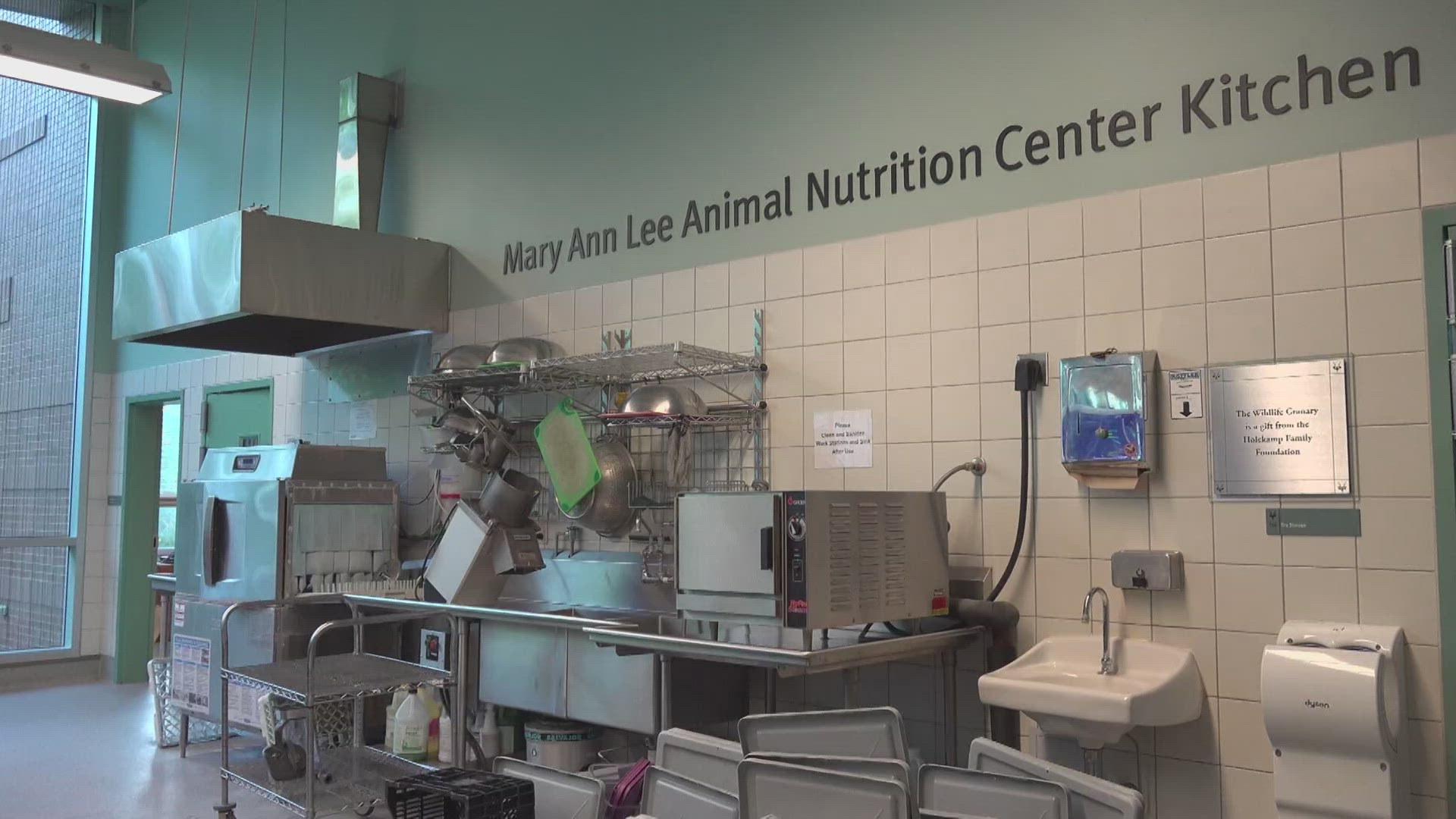ST. LOUIS — Feeding the animals at the St. Louis Zoo requires a herculean effort.
There are thousands of animals to be fed and many with drastically different diets.
It may surprise you that the number of staff preparing the huge amounts of food is rather small.
It's the top of the morning at the St. Louis Zoo, and one department is up before the animals.
"The day starts at 5 a.m. is when we all clock in and get to work."
The Animal Nutrition Center is the pulse of the zoo where every morsel of food is prepared for the animal kingdom.
"We feed roughly 16-17,000 animals and that includes some of our feeder insects that go on to feed other animals, so we'll feed the worms that go on to feed the bird," said Hannah Rehling an Animal Nutrition Keeper at the zoo.
Rehling is part of a tiny crew that prepares the enormous amounts of food: four full-timers and one part-time person.
"We try our best to get as much done with what we got," Rehling said.
Diets are vastly different. "We have some animals that receive whole fish, whole meat and we dole those out accordingly based on weight," Rehling said.
From fruits and veggies, to the more unusual.
"I'd say the most unusual one is we dry out little meat patties for our Hide beetles and it smells the way you'd expect," said a smiling Rehling.
They prep in advance, working two days ahead of schedule. They have two huge storage freezers with meats, produce and more exotic foods like mice in bulk.
"We kind of joke we're kind of like the grocery delivery service of the zoo. They'll put in their order of what they want and what their nutritional needs are, and we send out what they need, and they prepare it and cut it however they want," Rehling said.
Once the food is prepped, it is delivered to all the animals. For instance, the bird house has more than 40 different species of birds. Kimberley Washington is a Bird Keeper.
"We have different types of food for different types of birds for their needs daily and just feed everything out."
From meat, fish, fruit and insects and lots of worms!
"The super worm's kind of freak me out because they can bite back," Washington said.
One surprising food: black-eyed peas, which is a great source of protein.
"Some birds will eat it if it's the last thing on the plate, versus it might be the first thing they eat on the plate," said Washington.
One thing is for sure is that all of the food is prepared and served with love.
"We get so many compliments from all the keepers out there and sometimes we get fun pics of enrichment things we sent out, or 'Aww, they really loved this bone or something this week' and it really fuels us and keeps us going," Rehling said.
So what is the grocery bill to feed more than 16,000 animals?
The budget is about $1 million a year.
That includes all the meat, fish, produce, hay and staff.

